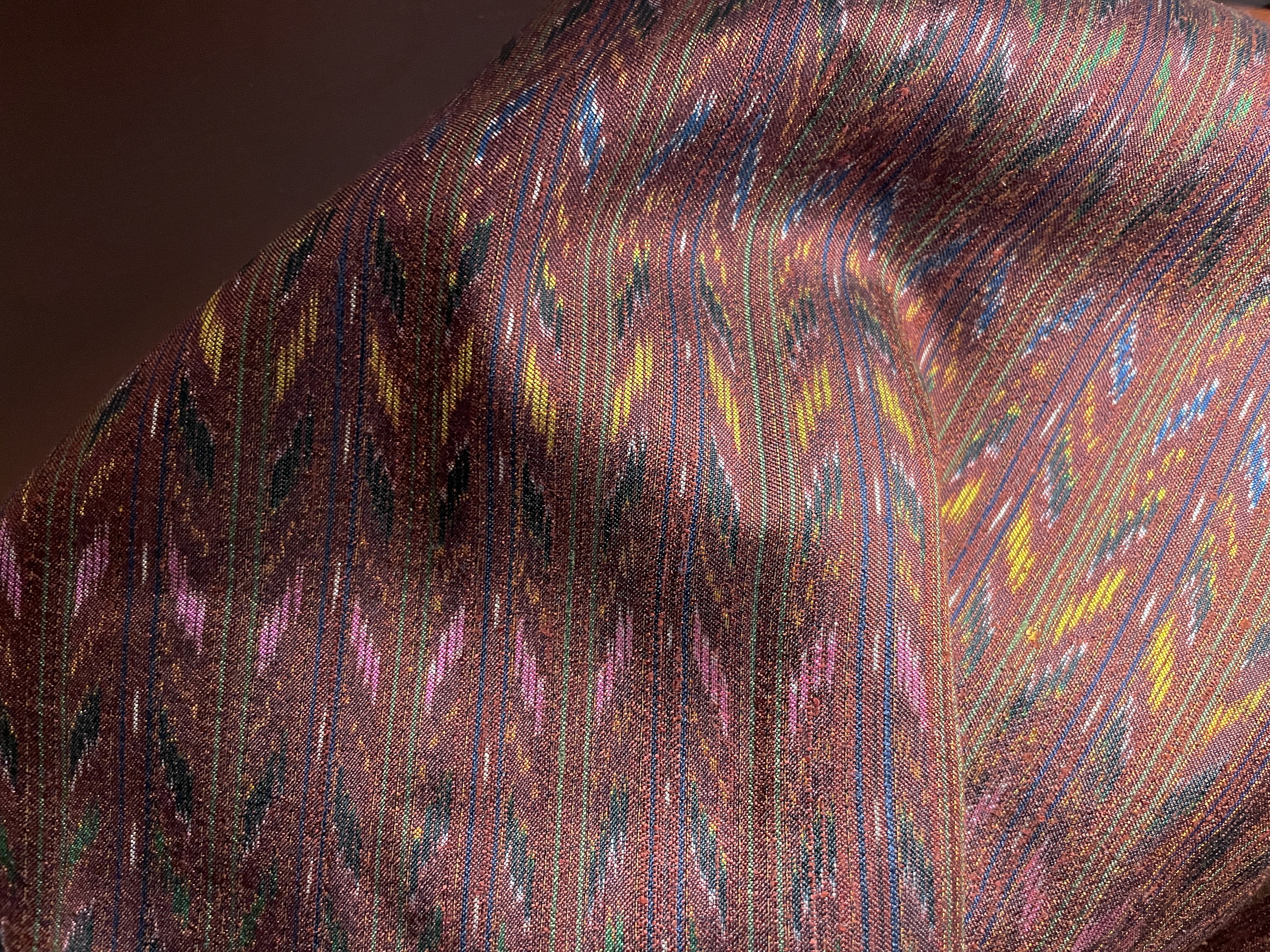Accession card
Description
Pha hol is the name for an ikat-patterned silk cloth woven among ethnically minoritized Khmer communities in today's Thailand, especially in Surin and Buriram provinces. Hol is "the Queen of Surin silk" many say -- the most beautiful, locally meaningful pattern. Calling hol a Queen draws attention to its creation and use primarily by women. Calling hol a Queen may also associate it with the Queen Mother of Thailand, Sirikit, who is often credited with "reviving" silk weaving starting in the 1960s, her devotion to and fascination with arts/crafts made in rural Thailand inseparable from the state and monarchy's developmentalist and virulent anti-communist agendas over the long period of war in Southeast Asia.
Last week, Jatuporn 'New' Saeoueng was sentenced to three years in prison for violating Article 112 because she dressed like Queen Suthida in a "traditional" pink silk outfit and bravely strutted down the "People's Runway" at a pro-democracy protest in 2020 in Bangkok. Does hol as a Queen challenge forms of royal oppression perpetuated over centuries? Or does hol as Queen strengthen the normative regime of silk that offers only narrow, suffocating frames for subjectivity and selfhood in contemporary Thailand?
Hol is a Queen because Surin women are so skilled and smart, some say. Back in the old times (samai boran) when women in the area we know today as Surin wove silk to clothe both their families and local lords, and to supply royal courts with tributary gifts, they were often requested to weave a pattern for men, hol phroh (men's hol). This pattern is identified today by its lozenge/diamond shapes that bear resemblance to patola motifs, referencing deep histories of exchange and influence across and around the Indian Ocean. Women weavers loved this pattern but could not wear it; it was for men, and only men of certain rank and status. So they took the pattern, rearranged it as they knotted it at their matmi frames, and then as they were weaving, osbcured it even further by breaking it up with evenly spaced green and blue stripes. The resulting deep red pattern is the one we know today as hol srei, women's hol. Hol srei is the type of hol that Surin people refer to when they call hol the Queen of Surin silks. This is but one story of hol, and it is a story most Surin weavers know and like to tell. The men's pattern is hidden but the ingenuity of its weavers is not, though it pulses steadily at the peripheries of recognition.
Code
Date
Credits / copyrights
Photo by author
Title
Medium
- Image



